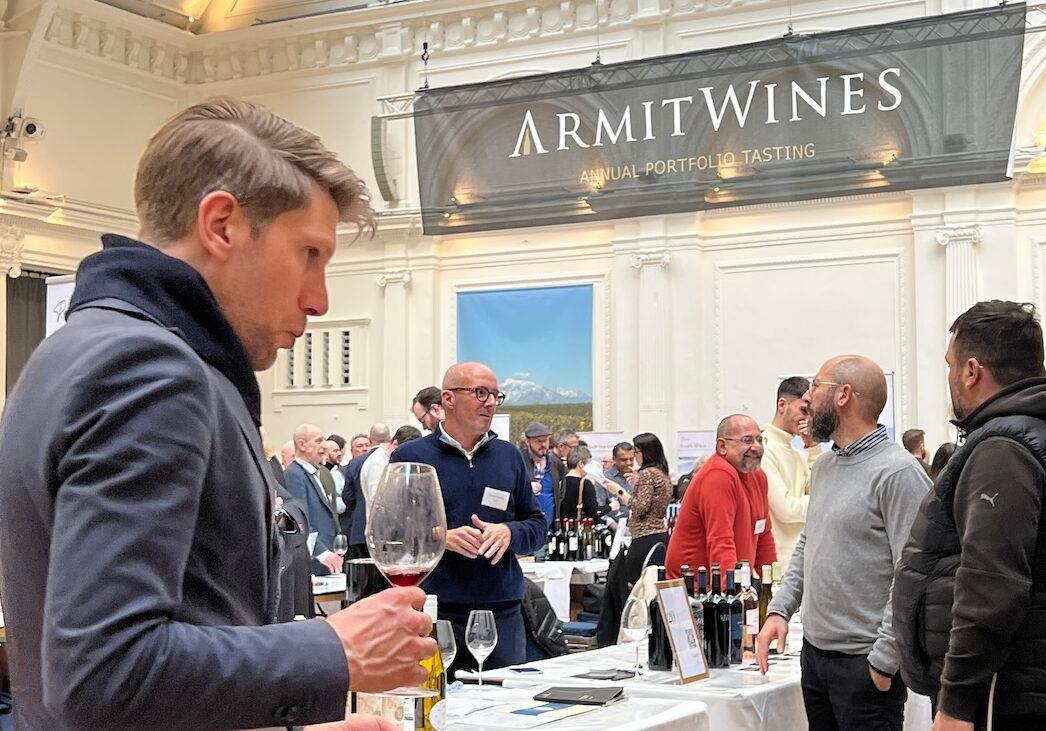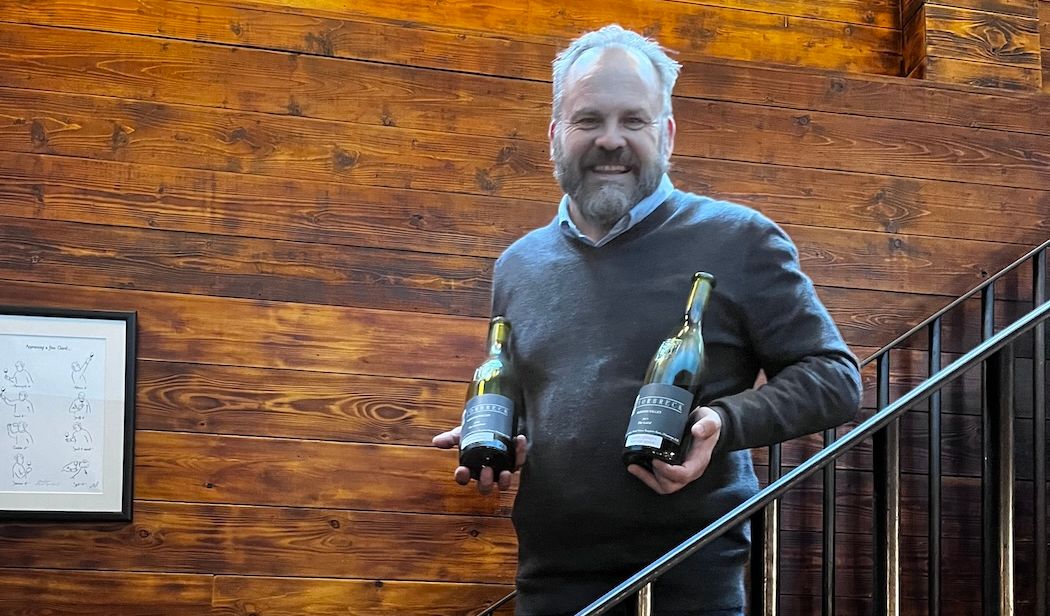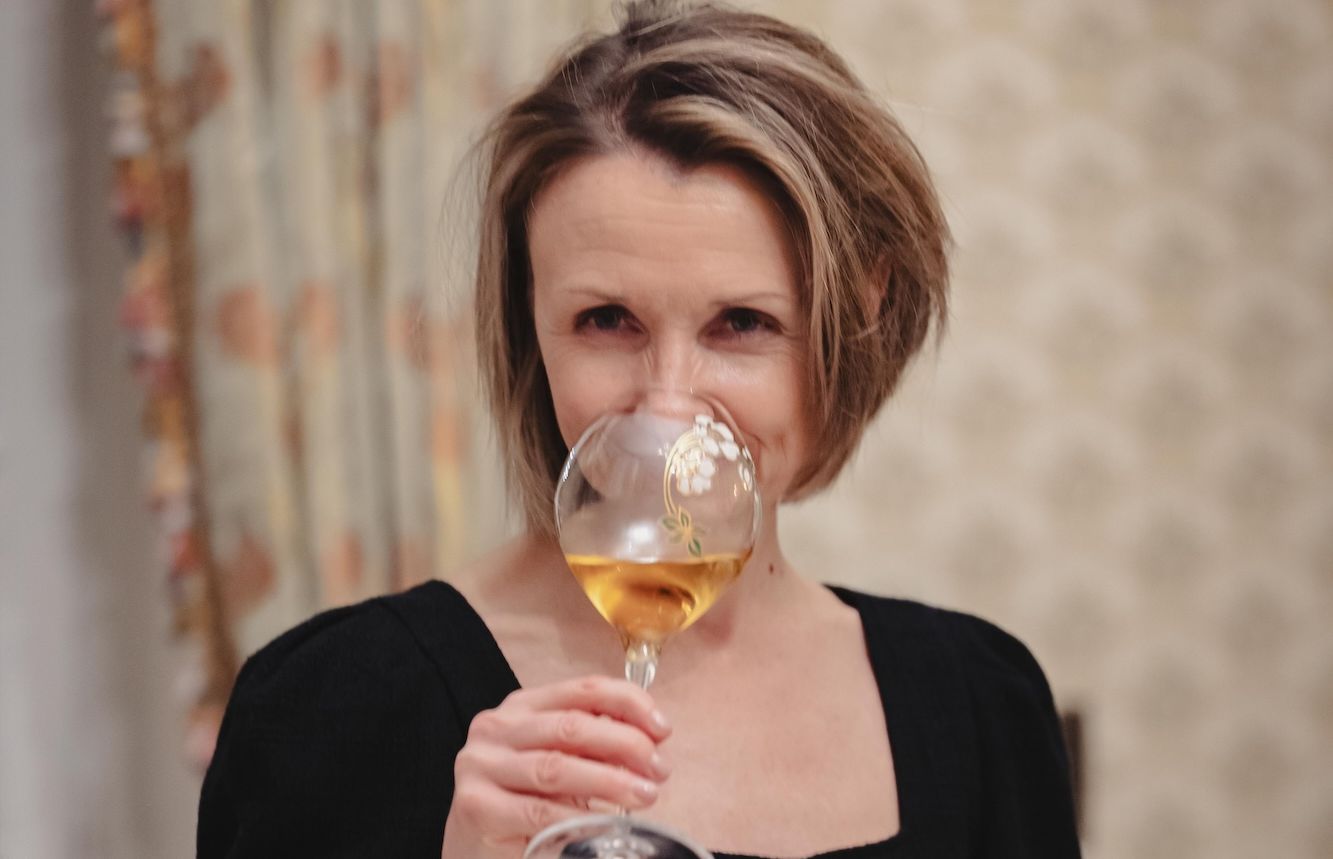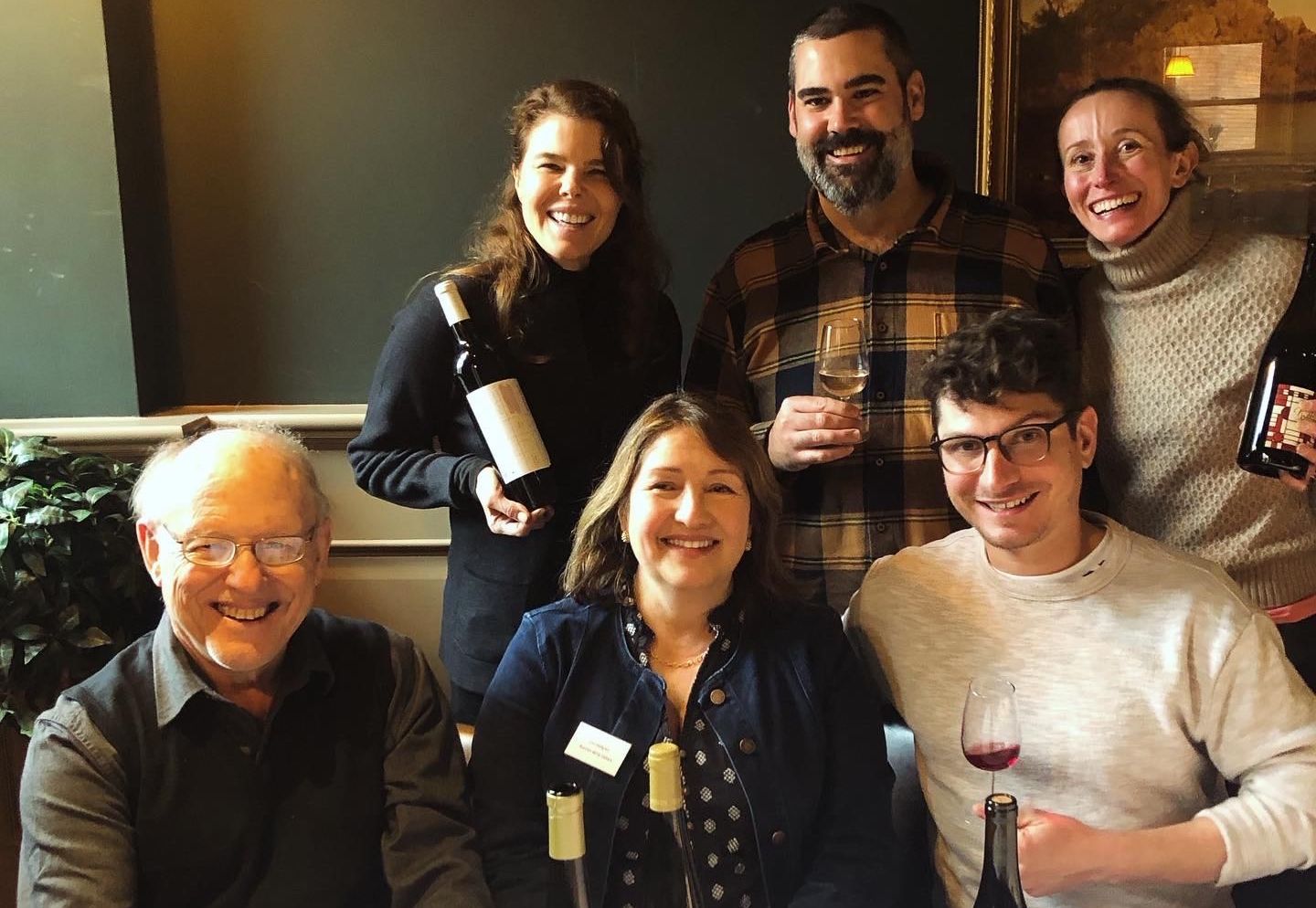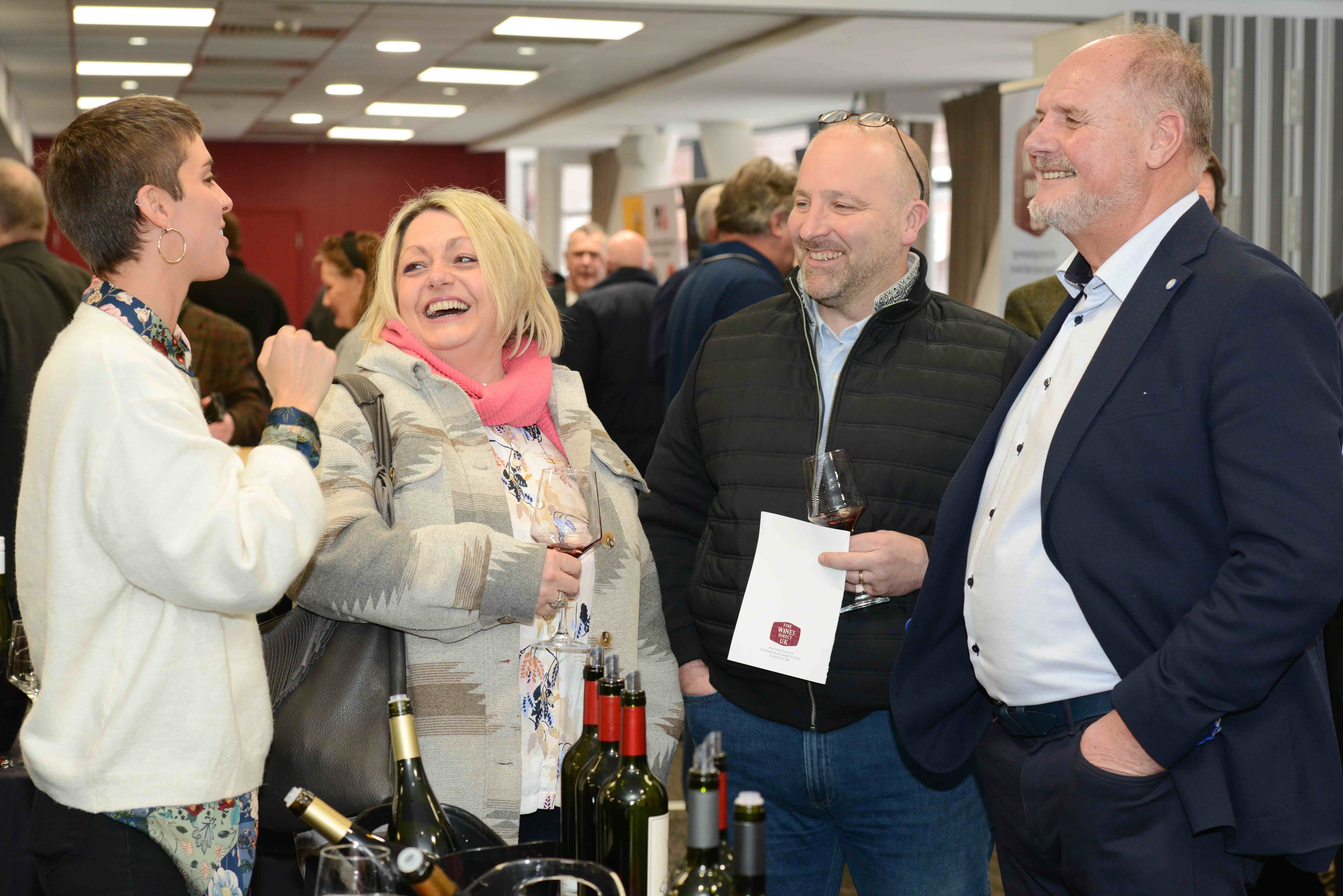“Even more fantastic wines all suggesting that in these hard times, Armit is truly staying ahead of the game,” writes Keay.
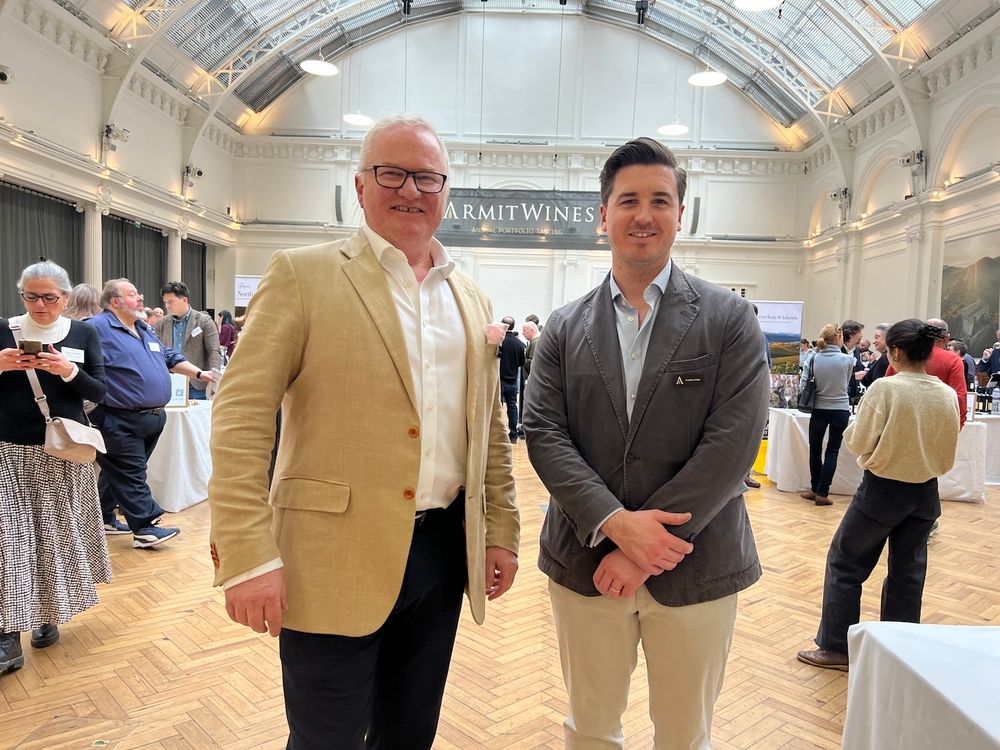
“Our relationship with our suppliers lies at the very core of our business, it’s absolutely key.” Armit Wines MD Brett Fleming and head of marketing Jonathan White (l-r), Lindley Hall, London March 5, 2024
I’ll admit, I approached the venue for Armit Wines’s annual portfolio tasting with some misgivings. It’s not that the Royal Horticultural Halls are unfamiliar – I seem to spend as much time there as I do in my own house – but I associate Armit with the more august surroundings of One Great George Street, which it had to abandon after deciding to merge its tastings events.
I needn’t have worried because there was something here for everyone.
For traditionalists, fine Bordeaux including Château Les Carmes Haut Brion, Château Latour and Château Pavie and great champagne from Geoffroy and from Gimonnet; for Burgundians, a wide range including Domaines Leflaive and Domaine Darviot Perrin, whilst for those who prefer the new world some truly great producers including Beaux Freres (Oregon), Bien Nacido and Solomon Hills Estates (both California), Delaire Graff (South Africa), Rockford ((Australia) and Astrolabe (New Zealand). Oh, and some great Spanish producers including La Rioja Alta and Aster from Ribera del Duero.

Claudio Fenocchio – one of the many top drawer Italian producers showing wines at the event
But frankly although this was a full portfolio event, it was nigh impossible to avoid the Italian elephant in the middle of the room. Armit has one of the best ranges in the trade – Bruno Giacosa, Roagna and Giacomo Fenocchio from Piedmont, Sesti, Querciabella and Tenute San Guido from Tuscany. Pietradolce (Sicily) Elena Walch (Alto Adige)…the list continues. So many exciting wines I could have joined the brown trouser brigade.
But there was something else about this tasting. Unlike other recent events, there was a huge turnout (64 according to Armit’s MD Brett Fleming) of owners and producers showing their wines to the trade and later the public (a private client event followed).
“Our relationship with our suppliers lies at the very core of our business, it’s absolutely key. We do whatever we can to support them – tonight we are hosting a special dinner for them to demonstrate this – as they have done for us. These are very difficult times and we have to hold together,” he says.
Fleming doesn’t mince his words when talking about the challenges facing the trade, a situation made worse by crass government policy – such as raising and complicating excise duties only to see a big drop in the overall taxes raised – by Millennials and Gen Z drinking less, if at all, and restaurants seeing a major drop in footfall.
“Everyone’s hurting and my feeling is that it’s going to get worse. People whose fixed term mortgages are ending and then seeing repayments almost double…they’re not going to have money to spend on eating out or on wine, which at the end of the day is a luxury, not an essential thing,” he says.
Fleming says the ultra-premium sector – ie Michelin starred restaurants – is holding up, just, but even here orders are down from a few years ago.
“The good news though is that we’re profitable and we’ve done that by working closely with suppliers and staff and generally, being more sustainable.”
So how were the wines?
Armit’s decision to hold a masterclass devoted purely to Italian whites was a masterstroke – it wasn’t long ago (20 years maybe) that many Italians didn’t really regard white wine as ‘proper’ wine but the improvement across the board in recent years has been staggering, led by white-dominant DOCs like Alto Adige, Collio, Lugana and Soave.
This masterclass saw six producers show six wines, including the unusual Piemme 2019 from Fattoria Le Puplie (made from 100% Petit Manseng), Fonte Canale 2018 from Tiberio in Abruzzo (100% Trebbiano d’Abruzzo) and Sant’ Andrea Bianco 2017 from Pietradolce (100% Carricante). However, it was the first three which make my top 10.

Roagna is of course best known for its Barolo but the producer has been making a few thousand bottles of wines a year in the Dethrona DOC from one of Piedmont’s more obscure white varieties. Montemarzino 2020 is 100% Timorasso, the grapes grown in small 450-metre high vineyard in ancient limestone soils of Tortonian origin; the result is extremely fine and elegant, with suggestions of pine, lemon and petrol on the palate.
Winemaker Luca Roagna says he calls this “a white Barolo” and I wouldn’t argue with that – it will be fascinating to see how this evolves. (RRP for current vintage £152)

Every now and then you taste a wine you literally want to take into a corner and savour every drop and it seemed I wasn’t alone with this sensation with wine Number 2, Elena Walch’s Grande Cuvee Beyond the Clouds Argentum Bonum 2015, a rich luscious blend of 80% Chardonnay and 20% “other” grapes, deliberately unspecified but sure to include Pinot Bianco and probably also Gewurztraminer (Alto Adige’s signature varieties).
Made from single vineyard grapes, the finished wine – which is fermented in oak barriques for 10 months and then bottle aged for a further six – spends four years ageing in an old silver mine at 2000 metres in Alto Adige’s Ridnaun Valley, in complete darkness three miles into the mine. The result – quite spectacular with a rounded finish supported by fine acidity. Almost certainly my wine of the tasting. (RRP for current vintage £69.20)
Chardonnay comprises 50% of Querciabella’s iconic Batàr (the other half is Pinot Bianco) and the Batar 2011 shown here by sales director Giorgio Fragiacomo was a showstopper (as was the Batàr 2021 also shown at the table) showing just why this wine has attained its iconic status. Winemaker Manfred Ing has dialled down the new oak from 100% to 10%, and also the battonage, mainly because of climate change, enabling a more rounded, fuller wine.
“Our founder was a huge fan of great white Burgundy and I think it’s best to view this as testimony to that, a white wine from the heart of Tuscany with a fantastic potential to age and evolve.” Indeed. (RRP for current vintage £87.20)

My fourth wine I really hadn’t wanted to include at all because one of Italy’s most iconic and highly regarded wines hardly needs any help from me. Tenuta San Guido’s Bolgheri Sassicaia 2007 was showing in a magnum and was as stunning as you might expect but it was the Sassicaia 2021 which grabbed my attention: just released, it is the usual blend of 85% Cabernet Sauvignon and 15% Cab Franc but is already tasting so well, with great dark berry fruit supported by fine tannins and good acidity (helped perhaps by a rainy spring) that it would have been seriously remiss not to include it. Already a classic. (RRP £253.20)

I’ve tasted enough 2019 Brunellos to know that this is a really great vintage, forward and accessible with good fruit and the Sangiovese softened by rounded warm tannins. However, Il Maronetto’s Brunello 2019 is probably the best 2019 I’ve tasted, absolutely delicious with perfect balance and great complexity reflecting 39 months in wood. Just great. (RRP POA). Be warned the volumes are tiny, to give you an idea the entire six-hectare estate only yields 28,000 bottles across three wines: this wine which is a traditional style Brunello, the more modern Madonna delle Grazie and a Rosso di Montalcino.

For something completely different, a sparkling Brut Tokaji Methode Traditonelle 2019 from Chateau Dereszla is my wine number 6. Considering dry Furmint has only been a thing for around 20 years, with the shift towards making sparkling wines happening over the past ten, some remarkable wines are coming out of Hungary’s most famous wine region, including this stunner, made from 60% Furmint and 40% Harslevelu, which spent 14 months in barrel before another year or so of bottle ageing. There’s 10gms dosage here, which makes for a lovely moreish alternative to champagne, and at around £24 a bottle retail, very good value.
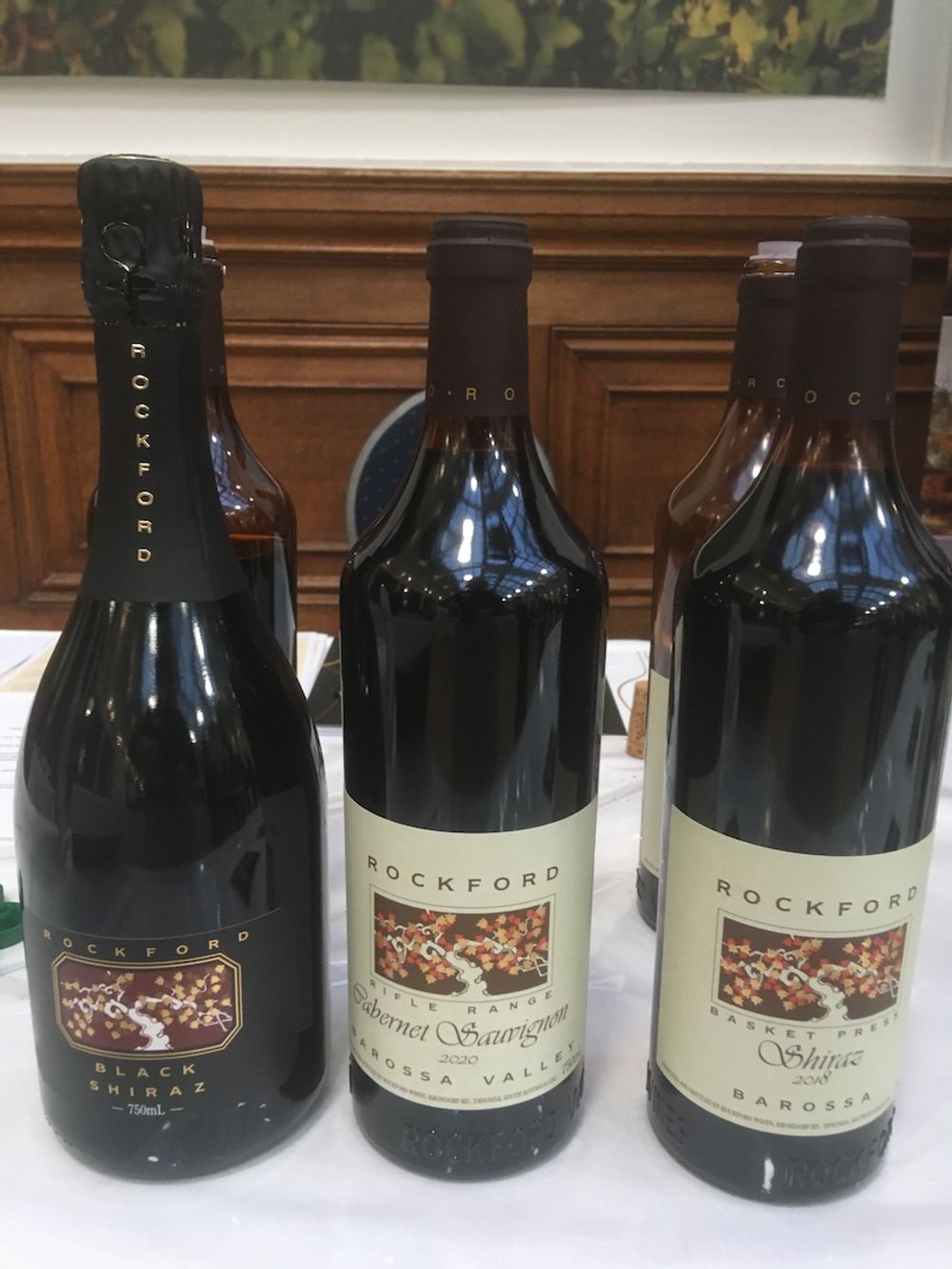
Wine 7 is a throwback – in a good way. Over the past few years, Australian Shiraz and Cabernet has undergone huge changes in style but some producers have stayed with the old way of doing things, with Barossa Valley’s Rockford foremost amongst them, using old destemming machinery dating back to the 1980s and even bottling in specially shaped 1980s style brown bottles rather than the more usual green. The estate’s Sparkling Black Shiraz NV is something of an icon now as is the Rifle Range Cab Sav 2020 but I really loved for me the deliciously brambly Basket Press Shiraz 2018, full-on but a deliciously evocative blast-from-the-past in a glass. A wine to drink whilst sitting in front of a roaring fire on a cold winter’s night. (£71.80)
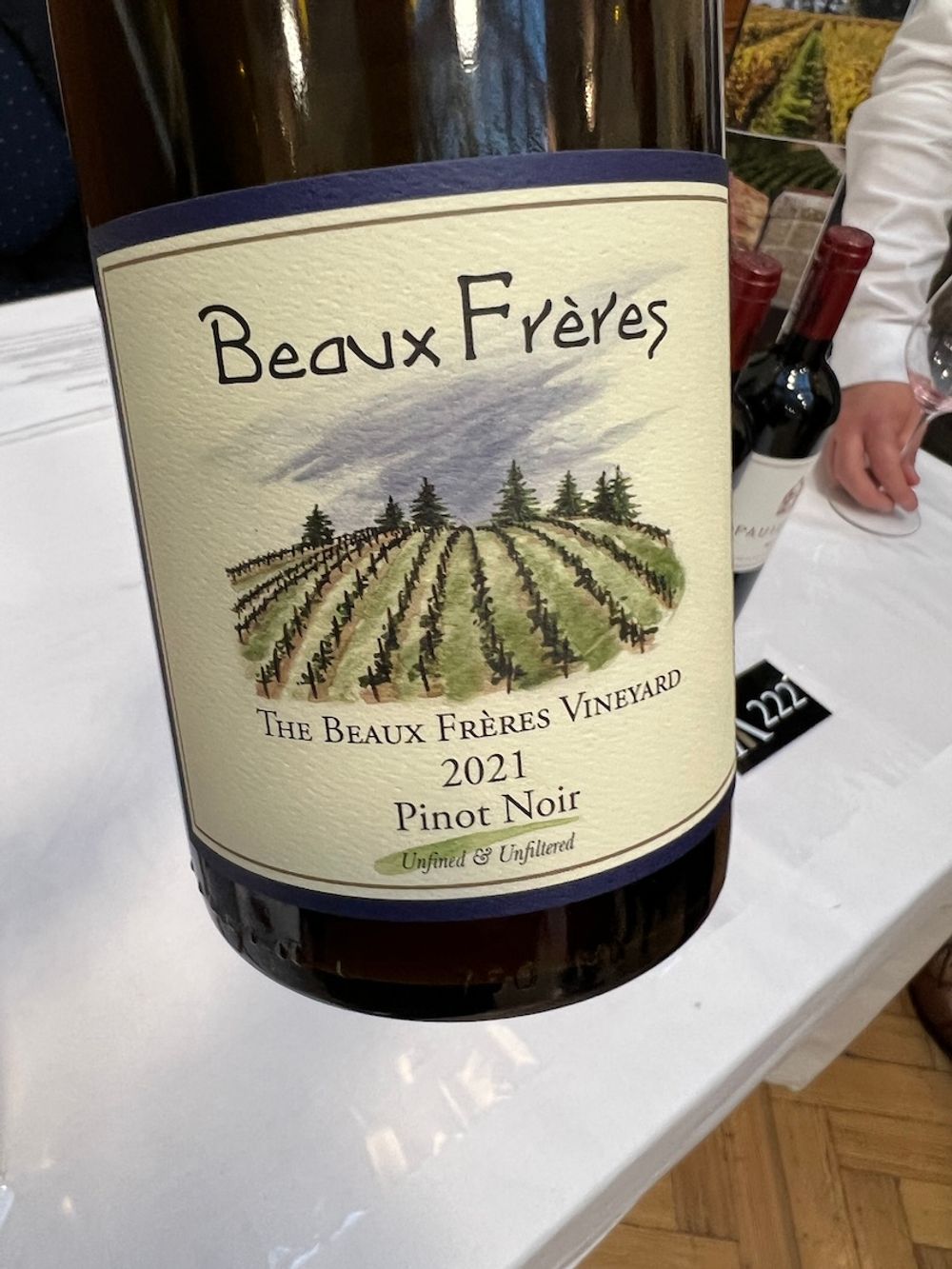
To the US for wines 8 and 9. Oregon’s Beaux Frères was established in Willamette Valley back in 1990 and has won a reputation for some of the state’s most well-made, vin de meditation Pinot Noirs. The The Beaux Frères Vineyard 2021 shows why – beautifully balanced, this is rounded but shows great poise and elegance – just 50,000 bottles made sadly, but very memorable. (RRP £133.20).
From California’s Santa Maria Valley, near Santa Barbara, Bien Nacido wines are highly distinctive, fruit driven but with good structure and elegance and the Bien Nacido Chardonnay 2021 is a fine example of how well they do this, medium bodied but with soft vanilla tones supporting a tropical palate, with mango and passion fruit coming through the long finish. (£61.80)
With so many great French names here, I knew I couldn’t end without some recommendation from that great wine producing nation so here it is, new to Armit, the Château Pavie 2012 Saint-Émilion Premier Grand Cru Classe. Not much to say about this other than it’s a typically rich, silky savoury wine from this great house – which dates back to 1912 – showing great balance with the Merlot and Cab Franc supporting the Cab Sav and helping produce an amazingly long finish. (RRP £333.60). Wonderful stuff.
So another annual tasting, lots of attendees but even more fantastic wines all suggesting that in these hard times, Armit is truly staying ahead of the game.
Armit Wines is a commercial partner of The Buyer. To discover more about them click here.
